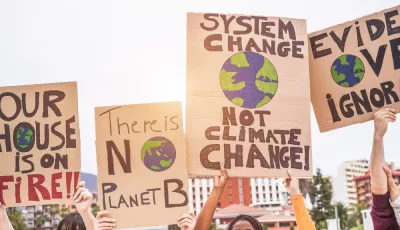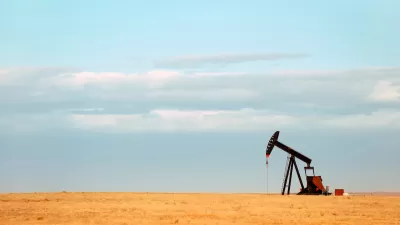APA’s third annual Trend Report for Urban Planners is out and offers a comprehensive look at potential drivers of change that could impact communities and the work of planners for decades to come.

The American Planning Association (APA), in partnership with the Lincoln Institute of Land Policy, recently released its annual Trend Report for Planners. The report provides insights into 100 existing, emerging, and potential future trends to help planners in their current and long-range planning work.
Trends are organized into three time frames — Act Now, Prepare, and Learn and Watch — and then grouped into themed clusters. Of the trends needing immediate action, planners likely will not be surprised to find climate change, housing, transportation, and artificial intelligence. Less expected, however, may be the value of youth involvement in planning processes and the impacts of growing political polarization and societal division on planners’ work.
Looking to the future, the themes in the Prepare and Learn and Watch touch upon the changing economic landscape, including changes in work and retail; how new technologies and innovations will affect the world, and potentially universe, around us; and longer term implications of and potential solutions for climate change.
The report concludes that, “knowing about these external drivers of change, understanding how they may impact our communities and the work we do, and preparing for and proactively including them in our plans for the future of our communities is more important than ever before.”
FULL STORY: 2024 Trend Report for Planners

Alabama: Trump Terminates Settlements for Black Communities Harmed By Raw Sewage
Trump deemed the landmark civil rights agreement “illegal DEI and environmental justice policy.”

Planetizen Federal Action Tracker
A weekly monitor of how Trump’s orders and actions are impacting planners and planning in America.

The 120 Year Old Tiny Home Villages That Sheltered San Francisco’s Earthquake Refugees
More than a century ago, San Francisco mobilized to house thousands of residents displaced by the 1906 earthquake. Could their strategy offer a model for the present?

LA’s Tree Emergency Goes Beyond Vandalism
After a vandal destroyed dozens of downtown LA trees, Mayor Karen Bass vowed to replace them. Days later, she slashed the city’s tree budget.

Sacramento Leads Nation With Bus-Mounted Bike Lane Enforcement Cameras
The city is the first to use its bus-mounted traffic enforcement system to cite drivers who park or drive in bike lanes.

Seattle Voters Approve Social Housing Referendum
Voters approved a corporate tax to fund the city’s housing authority despite an opposition campaign funded by Amazon and Microsoft.
Urban Design for Planners 1: Software Tools
This six-course series explores essential urban design concepts using open source software and equips planners with the tools they need to participate fully in the urban design process.
Planning for Universal Design
Learn the tools for implementing Universal Design in planning regulations.
Ada County Highway District
Clanton & Associates, Inc.
Jessamine County Fiscal Court
Institute for Housing and Urban Development Studies (IHS)
City of Grandview
Harvard GSD Executive Education
Toledo-Lucas County Plan Commissions
Salt Lake City
NYU Wagner Graduate School of Public Service





























